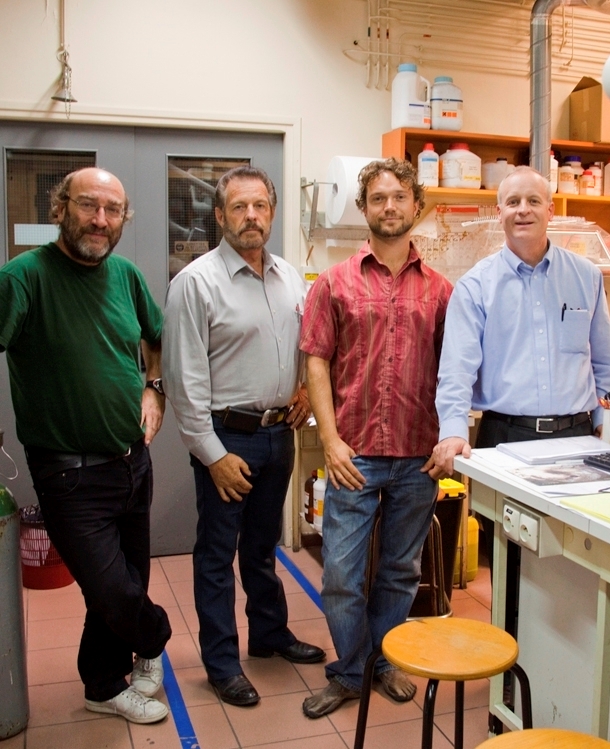Collaboration with EO Experts

Dr. Hervé Casabianca teaches D. Gary Young, Chris Packer, and Dr. Cole Woolley in his laboratory in France in 2010.
Because of the very real possibility of essential oil adulteration, I built a team of people around me of some of the best experts in the world. Where did I get my knowledge to know how to do this?
I started studying in 1994 with the Albert Vieille Laboratory in Grasse, France, where I took my first class in analytical chemistry. Then I went to Lyon, France, and studied with Dr. Hervé Casabianca. He has spoken from our convention stage and will do so again next year. Four times he has been in my laboratory to do training, and he has done training in Ecuador as well. I have traveled to France and studied with him five or six times over the years, continually updating my understanding. I have taken three of my technicians to France to train and study with him as well.
So this is not something that I take lightly. I take it very, very seriously. The other expert I studied with was essential oil expert and author Dr. K. Hüsnü Can Baser, professor at Anadolu University in Eskisehir, Turkey. I went there and took 121 class hours in Gas Chromatography-Mass Spectrometry analysis and in understanding essential oils.
The other thing that is very important is that I have Dr. Richard Carlson, Dr. Cole Woolley, and other scientists working in the laboratory to understand and determine the right percentages of compounds that should be present.
Now, can you usually determine the ratios or percentages of an essential oil compound and detect the percentage of synthetics? No. You can see only that those percentages are not justified. You have to go back and use other instruments to determine if it’s synthetic or if it’s natural. You can run it again and separate it. Then we can see the optical rotations and the FTIR and all the different things that we do for identifying if a synthetic is there. Do we do it alone? No, we don’t.
I work with seven other laboratories around the world in identifying compounds. When we have a question or a suspicion that something is not right, we send it to the other labs and ask them to break it down.

